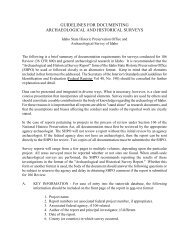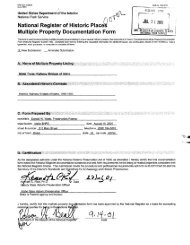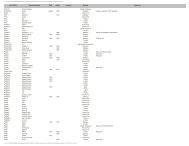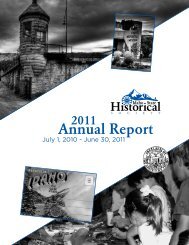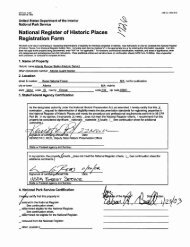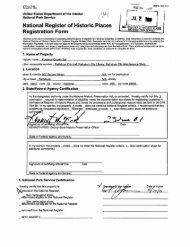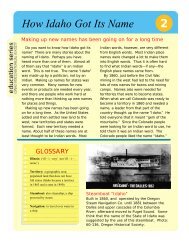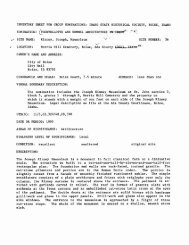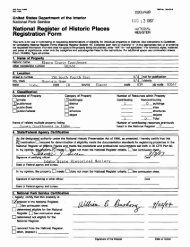Primary and Secondary Sources - Idaho State Historical Society
Primary and Secondary Sources - Idaho State Historical Society
Primary and Secondary Sources - Idaho State Historical Society
- No tags were found...
Create successful ePaper yourself
Turn your PDF publications into a flip-book with our unique Google optimized e-Paper software.
econstruct an event <strong>and</strong> guess what really happened. A secondary source, on the other h<strong>and</strong>, can help researcherssummarize a huge amount of information <strong>and</strong> put it into context. This can be very useful when approaching a complextopic for the first time. <strong>Secondary</strong> sources can also provide exciting ideas <strong>and</strong> points‐of‐ view from scholars who havealready examined an issue critically.ActivityAlthough the concept of primary <strong>and</strong> secondary sources is an important one, the presentation of the topic need not becomplex. The lesson has three short parts: definition <strong>and</strong> explanation of the concept by the instructor, independentwork on the <strong>Primary</strong> <strong>and</strong> <strong>Secondary</strong> Source Worksheet, <strong>and</strong> a group review of the answers <strong>and</strong> follow‐up discussion.1. Definition <strong>and</strong> Explanation: Use the background material to present the two types of sources to the class. Itmight be useful to set them up as separate categories on the whiteboard <strong>and</strong> then work as a class to come upwith examples that fit in each column. Make sure that you use a specific hypothetical situation rather thangeneral terms. You might pretend that you are researching baseball from 1900‐1910 or the Lewis <strong>and</strong> ClarkExpedition or some other topic familiar to the students. Some sources can be either primary or secondarydepending on what you are researching. A newspaper article or magazine, for example, could be put in eithercategory depending on when it was written <strong>and</strong> published.2. <strong>Primary</strong> <strong>and</strong> <strong>Secondary</strong> Source Worksheet: After the class has a clear underst<strong>and</strong>ing of the concept, h<strong>and</strong>outthe primary <strong>and</strong> secondary source worksheet <strong>and</strong> have the students work independently to categorize eachsource. The worksheet presents ten imaginary resources that a student might come across while researchingmining in the late 1800’s. The short worksheet will help reinforce the basic concept presented earlier.3. Answer Review <strong>and</strong> Follow‐up Discussion: Go over the answers to the worksheet as a class. If time permits, usethe discussion questions below to facilitate further discussion <strong>and</strong> critical thinking about primary <strong>and</strong> secondaryresources.Possible Discussion QuestionsIs a primary resource better then a secondary resource?Which type of resource is easier to find?Just because a primary source is a first person account does that mean that it is always the truth?Are some sources more reliable than other?How can you tell if a source is reliable?




